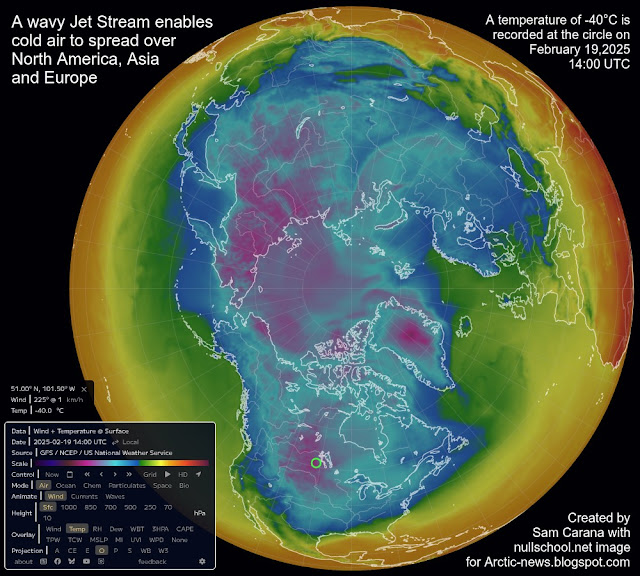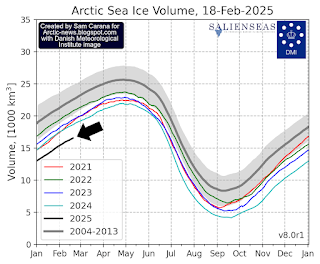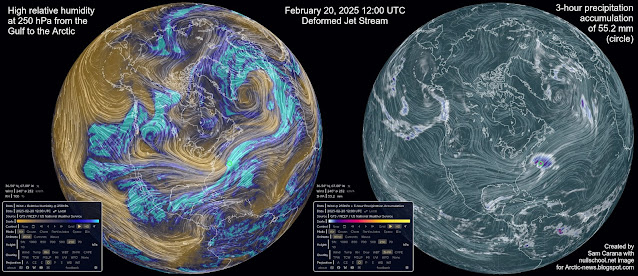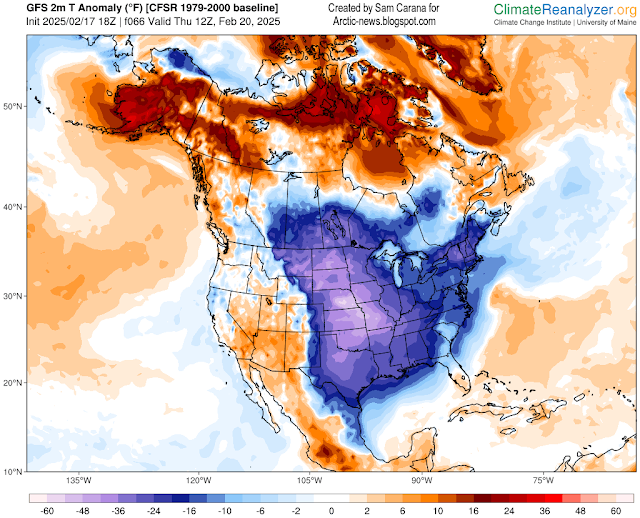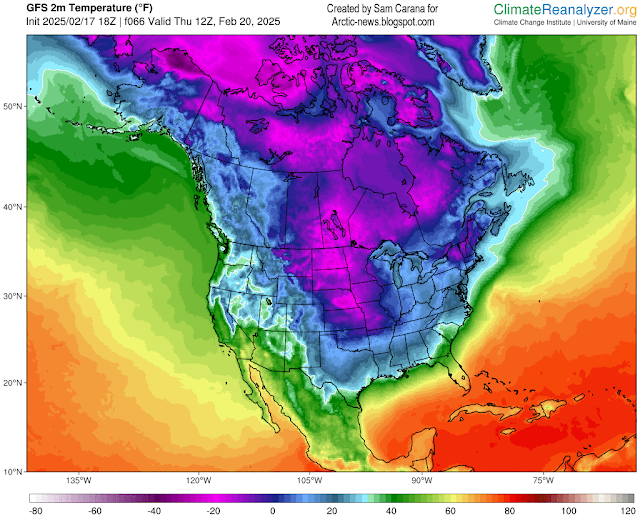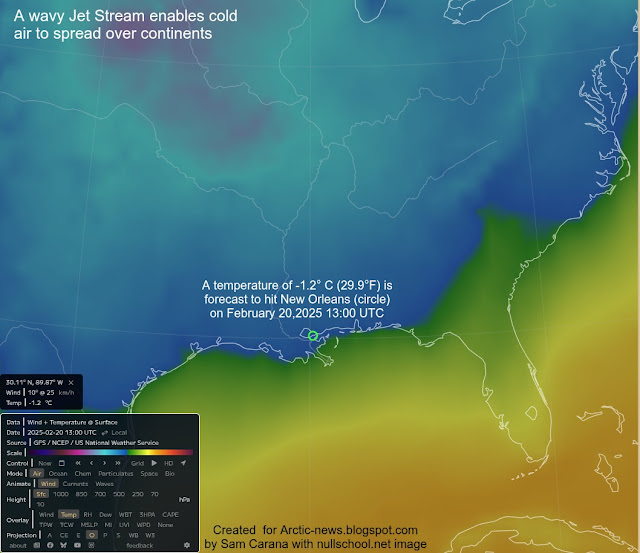A temperature of -40°C (-39.9°F) was recorded at the circle on February 19, 2025 14:00 UTC, as illustrated by the above image.
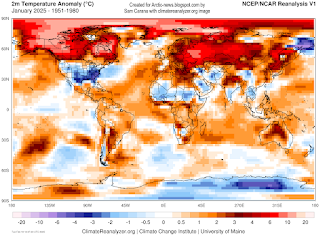
Temperature anomalies were very high in January 2025 in the Arctic, as illustrated by the image on the right.
Arctic sea ice extent is currently at a record low for the time of year. Temperatures of the water in the Arctic Ocean have been very high, resulting in very low sea ice volume, as illustrated by the image underneath on the right.
Arctic amplification of global warming at times causes the Jet Stream to become very wavy, enabling cold air from the Arctic to spread over deep over continents (i.e. North America, Asia and Europe).
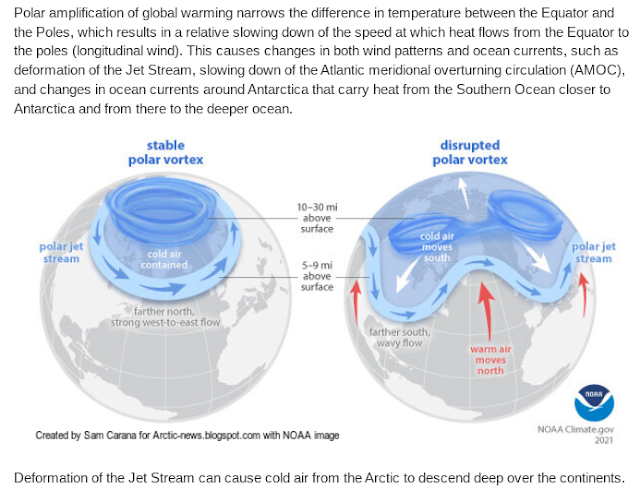 |
| [ from earlier post ] |
The image below shows a deformed Jet Stream (lines show wind pattern) forecast for February 20, 2025 12:00 UTC, with high relative humidity at 250 hPa (left) and a 3-hour precipitation accumulation of 55.2 mm forecast at the green circle (right).
The image below shows temperature anomalies (°F) forecast for February 20, 2025 12:00 UTC over North America.
The image below shows a forecast of the actual temperature (°F) on February 20, 2025 12:00 UTC over North America.
The situation is dire and the precautionary principle calls for rapid, comprehensive and effective action to reduce the damage and to improve the situation, as described in this 2022 post, where needed in combination with a Climate Emergency Declaration, as discussed at this group.
Links
• Climate Reanalyzer
https://climatereanalyzer.org
• nullschool.net
https://earth.nullschool.net
• NOAA – Understanding the Arctic polar vortex
https://www.climate.gov/news-features/understanding-climate/understanding-arctic-polar-vortex
also discussed on facebook at:
https://www.facebook.com/groups/arcticnews/posts/10162311831389679
• Double Blue Ocean Event 2025?
https://arctic-news.blogspot.com/2024/10/double-blue-ocean-event-2025.html
• Danish Meteorological Institute – Arctic sea ice volume and thickness
https://ocean.dmi.dk/arctic/icethickness/thk.uk.php
https://arctic-news.blogspot.com/2022/10/transforming-society.html
• Climate Plan
https://arctic-news.blogspot.com/p/climateplan.html
• Climate Emergency Declaration
https://arctic-news.blogspot.com/p/climate-emergency-declaration.html

